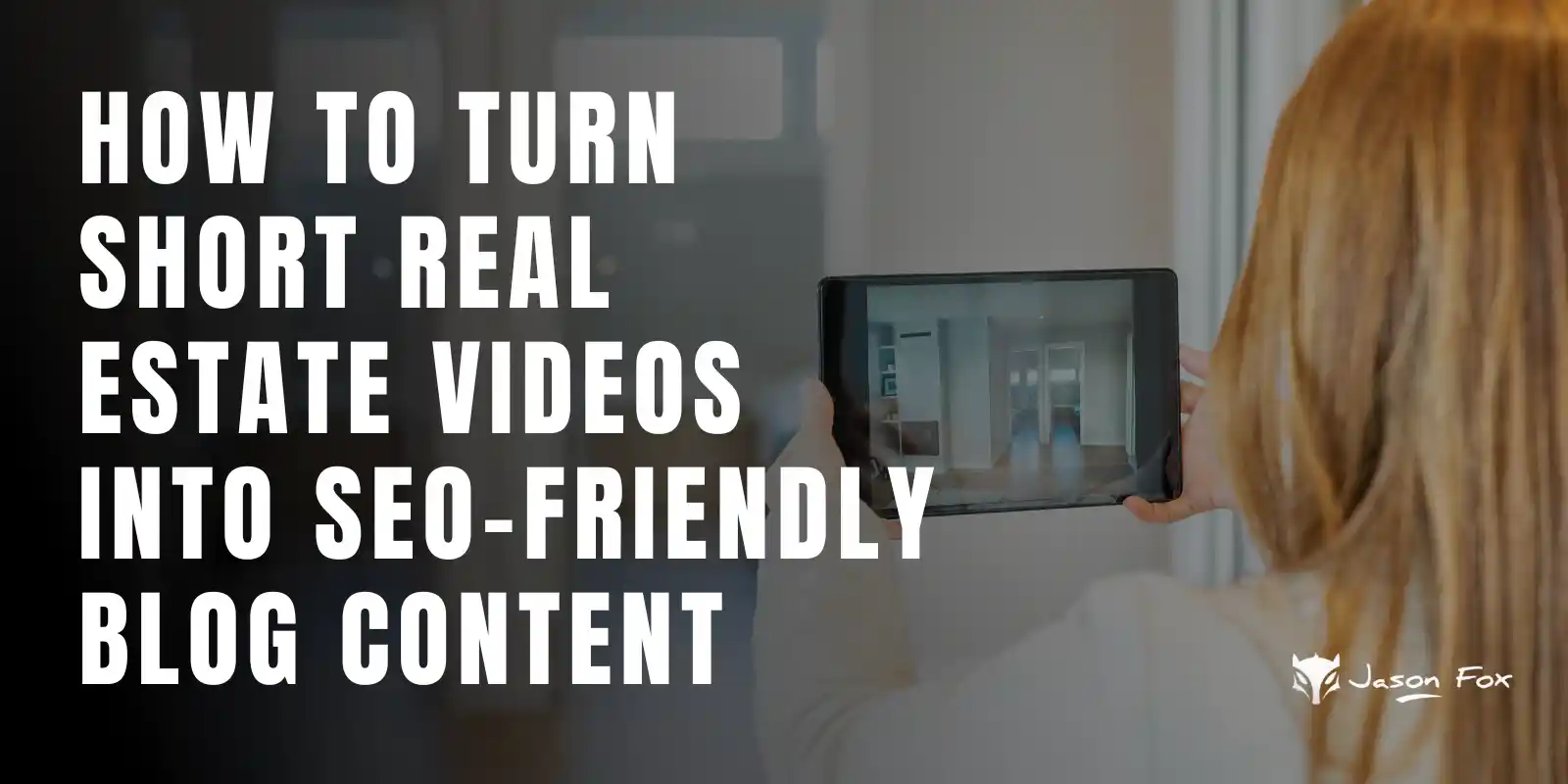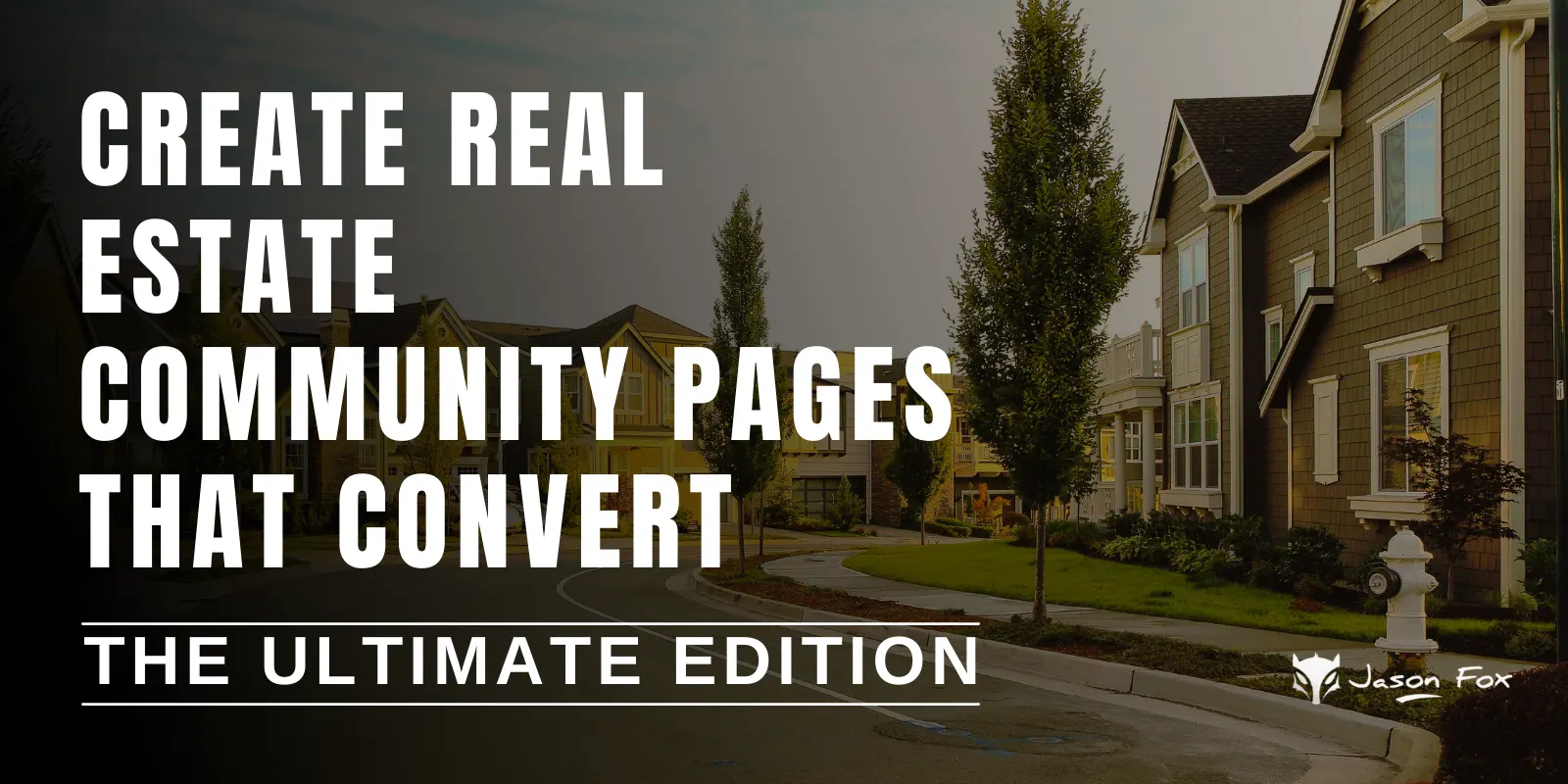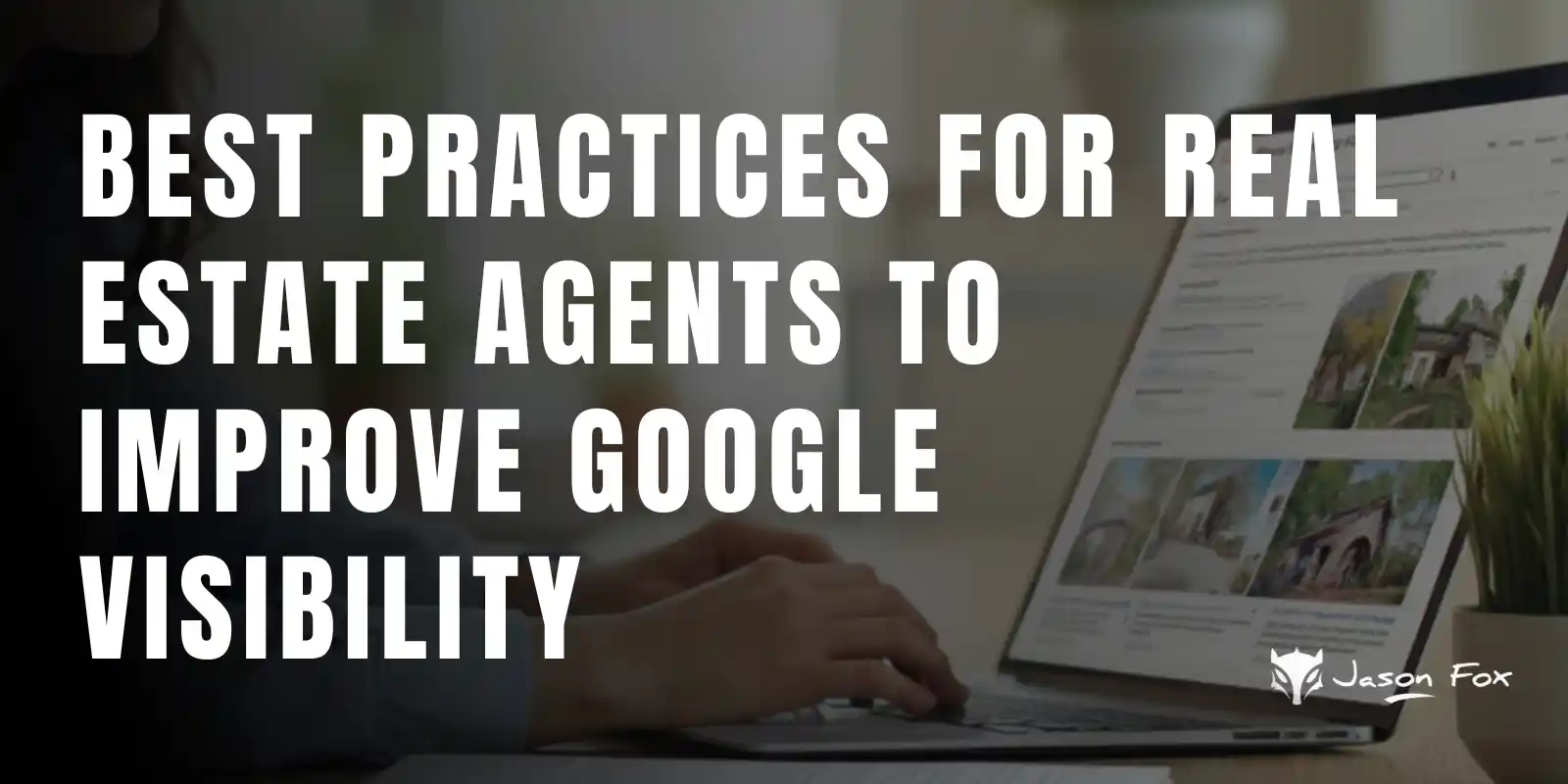Listing Strategies to Generate More Traffic
The real estate industry, like many others, is undergoing a digital shift.
The rise of massive listing sites like Realtor.com, Trulia, and Zillow has spearheaded the change by simplifying the home buying process.
Now, prospective buyers can filter by location, price, rooms, and more, resulting in a populated list of available homes that meet the desired parameters, all without the help and commitment of an agent.
The convenience, simplicity, and no-strings-attached aspect of online real estate shopping has vaulted it into super-stardom—now, almost 90% of Americans use online real estate websites to research properties.
For many real estate professionals, this shift from cold calls, referrals, newspaper ads, and other lead-generation mediums isn’t a welcome change. However, for all real estate professionals, it’s time to adapt or die.
In a 2020 study, the National Association of Realtors (NAR) found that 52% of homebuyers in 2019 first discovered their new home through the internet. In comparison, only 29% of houses were identified first by real estate agents. Furthermore, as more millennials and zoomers participate in the market over time, these numbers will only continue to skew in favor of internet listings.
In the end, exposure is the most important factor in a sale. For real estate agents and brokers, capitalizing on the well of online traffic-generating resources and tools is more crucial than ever and can allow you to reach a wider market with your listings. Everyone already posts on MLS, real estate directories, and sends newsletters, so what can you do to make yourself stand out?
If you’re listing homes or condos for sale, utilizing these strategies and leveraging technology to your advantage can distinguish your listings from the masses, boosting traffic and accelerating sales.
1. Use Instagram
Real estate marketing is a visual art. Pictures make or break listings and serve as the visual eye candy required to attract buyer interest.
Instagram, the premier visual social media platform, is the perfect marketing match.
When marketing listings on Instagram, it’s important to focus on the right demographics. By using Instagram’s powerful filters for location, age, interests, and behaviors, you can efficiently target the right demographics for your properties. A proven strategy is to create a catered carousel or video ad towards a specific demographic that resonates with the target audience’s desired imagery and interests.
Buffer
Buffer is a scheduling tool that provides automation to social media posting processes and can be customized to boost engagement by making the first comment on posts. Buffer also provides analytics metrics for posts, allowing you to keep tabs on your Instagram marketing strategy.
2. Drone Photography
Technology can assist photography in many ways—just as with virtual staging, drone photography uses technological advances to create appealing photos that attract buyers.
Drones are versatile in photography and can create still shots and videos. Wide and sweeping aerial frames can amaze potential buyers, while drone videos can be used to provide buyers virtual tours of the interior or exterior of the home.
The pricing of drone photography can vary widely, based on quantity and quality. For high-end property listings, drones can film cinema-quality shots that dramatically highlight the entire property.
3. Virtual Staging
When posting online listings, you only have seconds to grab a buyer’s interest before they continue scrolling. When 90% of home buyers start their shopping online, standing out from the crowd in a virtual marketplace can be extraordinarily valuable. With the quantity and quality of the competition, you should be doing everything you can to get your listings ahead.
Virtually staged homes and condos simply sell for more, faster. Replacing photos of cold and empty rooms with modern styling piques buyer interest and makes listings appear more professional.
If you decide to spring for virtual staging, you must choose a reputable company that does quality rendering and photoshop work. Quality virtual staging companies such as BoxBrownie.com are worth the price and can come close to real staging at a fraction of the cost.
Beware of virtual staging companies that do lower-quality work—photos with poorly proportioned models and bad photoshop are often worse than empty rooms.
4. Change the Main Listing Photo
Potential buyers will scroll through the same pages frequently, looking for any listings that catch their eye. If your property’s main photo doesn’t catch a buyer’s eye on the first scroll-through, it likely won’t in the future.
Changing the main photo for your listings frequently is a strategy to combat this effect. By changing the main photo frequently, the listing will appear visually fresh to buyers scrolling through the same filtered pages, giving the listing another opportunity to pique buyer interest.
5. Build a Strong Website

Image courtesy of Laura Baer – AussieGirlRealtor.com
One of the most important cogs of real estate traffic generation is your website. Regardless of where a buyer first finds your listing, it’s often inevitable that they’ll end up on your site. If your site is good, buyers who end up on your page often end up exploring and often come up on your other listings.
In essence, this means that traffic to your site means traffic to your listings.
So, just build a website. There are tons of premade, aesthetically-pleasing templates available on the internet. Sounds easy, right?
Well, sort of.
While building your website using a cookie-cutter solution is an easy fix, it isn’t what you want for your site. Remember that over 50% of homebuyers in 2020 found their listing on the internet—if you want your website to be a traffic and lead-converting machine, you’ll want to put your best foot forward. If you’re willing to spend on your clothes and office, why should your website be the exception?
There are a host of website-building solutions available on the solution. Although these solutions vary in product and price, they all can provide the framework needed for a successful website.
Regardless of the solution you use, there are several key rules for creating a new real estate site.
Mobile-Friendly
Real estate websites are created specifically to target potential buyers searching on the web. Why limit your site by pushing away mobile users?
The mass-availability of real estate listing information has also led to a fundamental change in the way buyers search for homes. In fast-moving real estate markets where time is of the essence, sending an offer days after a listing is posted may leave a buyer out of luck. As a result, buyers have adapted—why exclusively search for homes at home when you can search at work, in line for lunch, and on a bus ride?
The statistics verify this trend. In a 2019 study, the NAR found that over 80% of millennials in 2018 found their home on a mobile device.
When creating or modifying your site, your production site must cater to mobile and desktop users. As Google and other search engines also penalize the rankings of sites that aren’t mobile-friendly, can you afford not to be mobile-friendly?
Optimize for Keywords
Targeting certain local keyword searches using search engine optimization (SEO) practices can reap large traffic and lead dividends. As searchers often include the name of the city or region in their searches, ranking well on these specific clusters often brings in high-quality traffic.
When you first build your website, first focus on the main city you do business in.
e.g., for Seattle, you may want to target:
Seattle buy home
Seattle home listings
Seattle homes for sale
Seattle real estate
Seattle real estate agents
Seattle realtor
When targeting these keyword clusters, the goal is to dominate your local market and generate valuable local traffic for your site. Including your city is important, as searchers including your city in their search are much more likely to translate into real leads. If a prospective buyer looking for a home in Portland clicks through to your site advertising homes in Seattle, is that click that valuable?
By integrating these keywords organically throughout your site and blog posts, you’ll naturally increase your rankings on the respective search engine results pages (SERPs) and drive organic traffic to your listings.
Added Value Tools
Attracting visitors is one part of the challenge—retaining them is the second.
Providing added value to buyers who visit your website is a way to keep them coming back to your site. Integrating MLS database information into your website searches through the use of IDX plugins or Zillow’s database through their API can both be effective strategies for creating a powerful property search tool on your site.
6. Conduct A/B Testing on Everything
A/B testing, or split testing, is a method that can be used to compare two listings or sites to determine the better performing variant. By running both versions of the listings simultaneously, A/B testing can be used to determine how the change impacts improve the listing’s performance. A/B testing can be used on almost any changes, including virtual staging use, drone photography, and website changes.
Without A/B testing, the natural volatility in traffic and click-throughs over time can often make it impossible to determine the effects of a change. By conducting A/B testing, you eliminate noise by running both versions at the same time, balancing intraday and interday volatility. Additionally, while it can be tempting to skip A/B testing and push through simple changes that may seem like clear improvements, it’s still recommended that you test both options. Implementing a change that may hurt your business, in the long run, is significantly more important than running A/B testing!
A/B testing, like most experiments, relies on large numbers and volume for accuracy. If you’re still building up your traffic-generation process and listings, buying traffic to test your marketing strategies may be an effective method.
post contents
The real estate industry, like many others, is undergoing a digital shift.
The rise of massive listing sites like Realtor.com, Trulia, and Zillow has spearheaded the change by simplifying the home buying process.
Now, prospective buyers can filter by location, price, rooms, and more, resulting in a populated list of available homes that meet the desired parameters, all without the help and commitment of an agent.
The convenience, simplicity, and no-strings-attached aspect of online real estate shopping has vaulted it into super-stardom—now, almost 90% of Americans use online real estate websites to research properties.
For many real estate professionals, this shift from cold calls, referrals, newspaper ads, and other lead-generation mediums isn’t a welcome change. However, for all real estate professionals, it’s time to adapt or die.
In a 2020 study, the National Association of Realtors (NAR) found that 52% of homebuyers in 2019 first discovered their new home through the internet. In comparison, only 29% of houses were identified first by real estate agents. Furthermore, as more millennials and zoomers participate in the market over time, these numbers will only continue to skew in favor of internet listings.
In the end, exposure is the most important factor in a sale. For real estate agents and brokers, capitalizing on the well of online traffic-generating resources and tools is more crucial than ever and can allow you to reach a wider market with your listings. Everyone already posts on MLS, real estate directories, and sends newsletters, so what can you do to make yourself stand out?
If you’re listing homes or condos for sale, utilizing these strategies and leveraging technology to your advantage can distinguish your listings from the masses, boosting traffic and accelerating sales.
1. Use Instagram
Real estate marketing is a visual art. Pictures make or break listings and serve as the visual eye candy required to attract buyer interest.
Instagram, the premier visual social media platform, is the perfect marketing match.
When marketing listings on Instagram, it’s important to focus on the right demographics. By using Instagram’s powerful filters for location, age, interests, and behaviors, you can efficiently target the right demographics for your properties. A proven strategy is to create a catered carousel or video ad towards a specific demographic that resonates with the target audience’s desired imagery and interests.
Buffer
Buffer is a scheduling tool that provides automation to social media posting processes and can be customized to boost engagement by making the first comment on posts. Buffer also provides analytics metrics for posts, allowing you to keep tabs on your Instagram marketing strategy.
2. Drone Photography
Technology can assist photography in many ways—just as with virtual staging, drone photography uses technological advances to create appealing photos that attract buyers.
Drones are versatile in photography and can create still shots and videos. Wide and sweeping aerial frames can amaze potential buyers, while drone videos can be used to provide buyers virtual tours of the interior or exterior of the home.
The pricing of drone photography can vary widely, based on quantity and quality. For high-end property listings, drones can film cinema-quality shots that dramatically highlight the entire property.
3. Virtual Staging
When posting online listings, you only have seconds to grab a buyer’s interest before they continue scrolling. When 90% of home buyers start their shopping online, standing out from the crowd in a virtual marketplace can be extraordinarily valuable. With the quantity and quality of the competition, you should be doing everything you can to get your listings ahead.
Virtually staged homes and condos simply sell for more, faster. Replacing photos of cold and empty rooms with modern styling piques buyer interest and makes listings appear more professional.
If you decide to spring for virtual staging, you must choose a reputable company that does quality rendering and photoshop work. Quality virtual staging companies such as BoxBrownie.com are worth the price and can come close to real staging at a fraction of the cost.
Beware of virtual staging companies that do lower-quality work—photos with poorly proportioned models and bad photoshop are often worse than empty rooms.
4. Change the Main Listing Photo
Potential buyers will scroll through the same pages frequently, looking for any listings that catch their eye. If your property’s main photo doesn’t catch a buyer’s eye on the first scroll-through, it likely won’t in the future.
Changing the main photo for your listings frequently is a strategy to combat this effect. By changing the main photo frequently, the listing will appear visually fresh to buyers scrolling through the same filtered pages, giving the listing another opportunity to pique buyer interest.
5. Build a Strong Website

Image courtesy of Laura Baer – AussieGirlRealtor.com
One of the most important cogs of real estate traffic generation is your website. Regardless of where a buyer first finds your listing, it’s often inevitable that they’ll end up on your site. If your site is good, buyers who end up on your page often end up exploring and often come up on your other listings.
In essence, this means that traffic to your site means traffic to your listings.
So, just build a website. There are tons of premade, aesthetically-pleasing templates available on the internet. Sounds easy, right?
Well, sort of.
While building your website using a cookie-cutter solution is an easy fix, it isn’t what you want for your site. Remember that over 50% of homebuyers in 2020 found their listing on the internet—if you want your website to be a traffic and lead-converting machine, you’ll want to put your best foot forward. If you’re willing to spend on your clothes and office, why should your website be the exception?
There are a host of website-building solutions available on the solution. Although these solutions vary in product and price, they all can provide the framework needed for a successful website.
Regardless of the solution you use, there are several key rules for creating a new real estate site.
Mobile-Friendly
Real estate websites are created specifically to target potential buyers searching on the web. Why limit your site by pushing away mobile users?
The mass-availability of real estate listing information has also led to a fundamental change in the way buyers search for homes. In fast-moving real estate markets where time is of the essence, sending an offer days after a listing is posted may leave a buyer out of luck. As a result, buyers have adapted—why exclusively search for homes at home when you can search at work, in line for lunch, and on a bus ride?
The statistics verify this trend. In a 2019 study, the NAR found that over 80% of millennials in 2018 found their home on a mobile device.
When creating or modifying your site, your production site must cater to mobile and desktop users. As Google and other search engines also penalize the rankings of sites that aren’t mobile-friendly, can you afford not to be mobile-friendly?
Optimize for Keywords
Targeting certain local keyword searches using search engine optimization (SEO) practices can reap large traffic and lead dividends. As searchers often include the name of the city or region in their searches, ranking well on these specific clusters often brings in high-quality traffic.
When you first build your website, first focus on the main city you do business in.
e.g., for Seattle, you may want to target:
Seattle buy home
Seattle home listings
Seattle homes for sale
Seattle real estate
Seattle real estate agents
Seattle realtor
When targeting these keyword clusters, the goal is to dominate your local market and generate valuable local traffic for your site. Including your city is important, as searchers including your city in their search are much more likely to translate into real leads. If a prospective buyer looking for a home in Portland clicks through to your site advertising homes in Seattle, is that click that valuable?
By integrating these keywords organically throughout your site and blog posts, you’ll naturally increase your rankings on the respective search engine results pages (SERPs) and drive organic traffic to your listings.
Added Value Tools
Attracting visitors is one part of the challenge—retaining them is the second.
Providing added value to buyers who visit your website is a way to keep them coming back to your site. Integrating MLS database information into your website searches through the use of IDX plugins or Zillow’s database through their API can both be effective strategies for creating a powerful property search tool on your site.
6. Conduct A/B Testing on Everything
A/B testing, or split testing, is a method that can be used to compare two listings or sites to determine the better performing variant. By running both versions of the listings simultaneously, A/B testing can be used to determine how the change impacts improve the listing’s performance. A/B testing can be used on almost any changes, including virtual staging use, drone photography, and website changes.
Without A/B testing, the natural volatility in traffic and click-throughs over time can often make it impossible to determine the effects of a change. By conducting A/B testing, you eliminate noise by running both versions at the same time, balancing intraday and interday volatility. Additionally, while it can be tempting to skip A/B testing and push through simple changes that may seem like clear improvements, it’s still recommended that you test both options. Implementing a change that may hurt your business, in the long run, is significantly more important than running A/B testing!
A/B testing, like most experiments, relies on large numbers and volume for accuracy. If you’re still building up your traffic-generation process and listings, buying traffic to test your marketing strategies may be an effective method.
Latest articles
Short real estate videos can be transformed into powerful blog content with the right strategy. Learn how to expand on video topics, incorporate SEO best practices, and create engaging posts that drive traffic and boost your search rankings.
Learn how to create real estate community pages that attract buyers, boost your local SEO, and establish you as a market expert. This ultimate guide covers content creation tips, the use of AI tools, and IDX integration to help your pages stand out in 2024.
To stay competitive in real estate, agents must prioritize SEO to improve their Google visibility. By implementing proven strategies like asking for reviews, creating relevant content, and focusing on local SEO, you can attract more clients and increase your online presence.
BECOME A MEMBER
Become A Free DIY Real Estate Marketing Member & Get Access To:
LARGEST COLLECTION OF
Real Estate Marketing e-Books, Guides, Templates, & whitepapers
ON THE INTERNET
+ OVER 70 How To Website Training Videos including; WordPress, Agent Evolution Themes, & IDX Broker
+ DIY Real Estate Marketing Tips and Strategies Delivered to Your Inbox
Share this article
Written by : jasonfox
Jason Fox - Real Estate Marketing
Business: We build WordPress Real Estate Websites with IDX
Me: #GoHawks, #BringBackTheSonics, #MaybeNextYearMariners, #ILoveMyKids #SeattleSunLover #SeattleWaterLover #BFF
Blog: Focuses on Wordpress Websites, Content Management, SEO Services, SEM Campaigns, Social Media Marketing, Email Marketing, Beautiful Design, IDX, and more.










